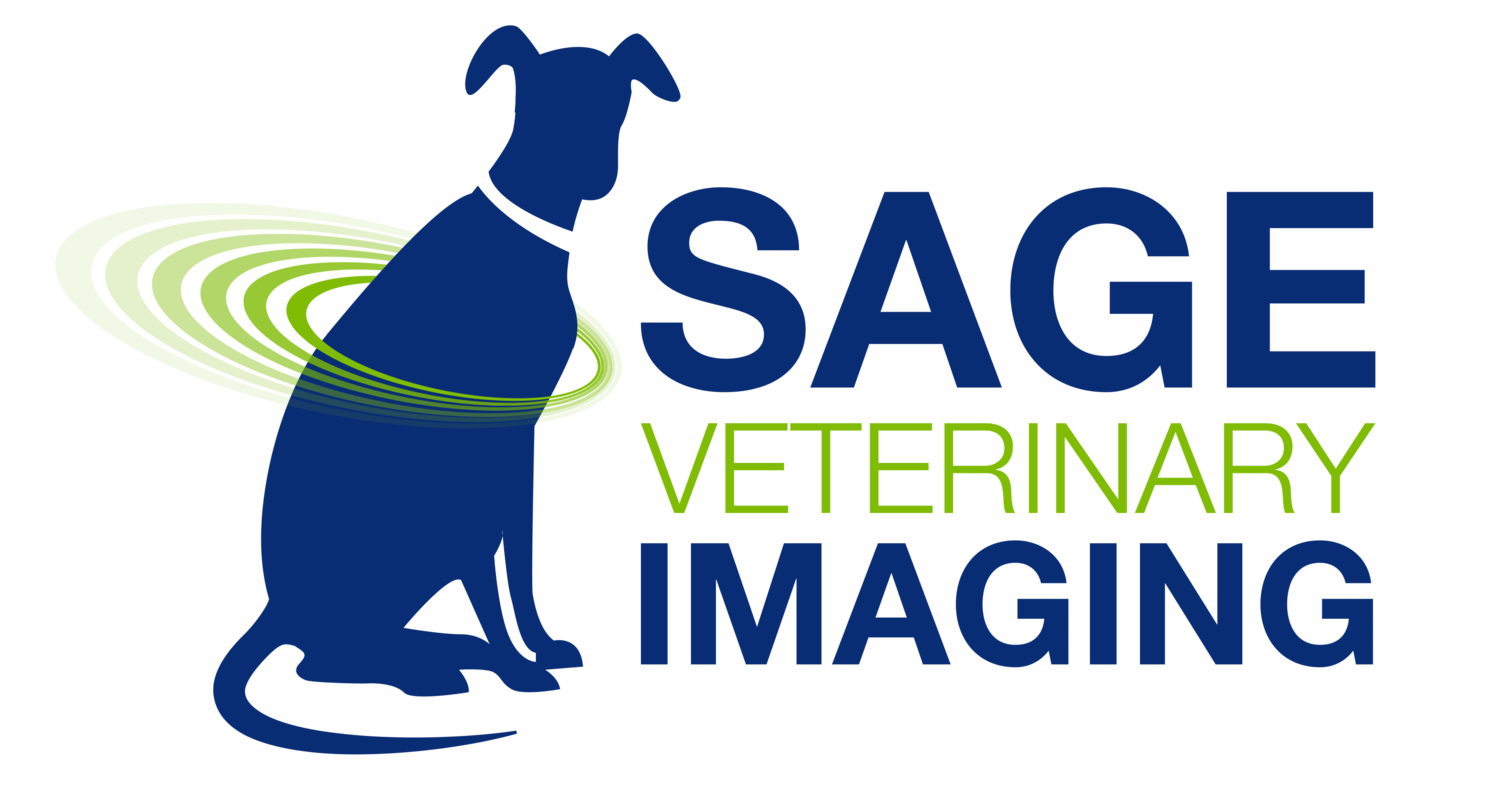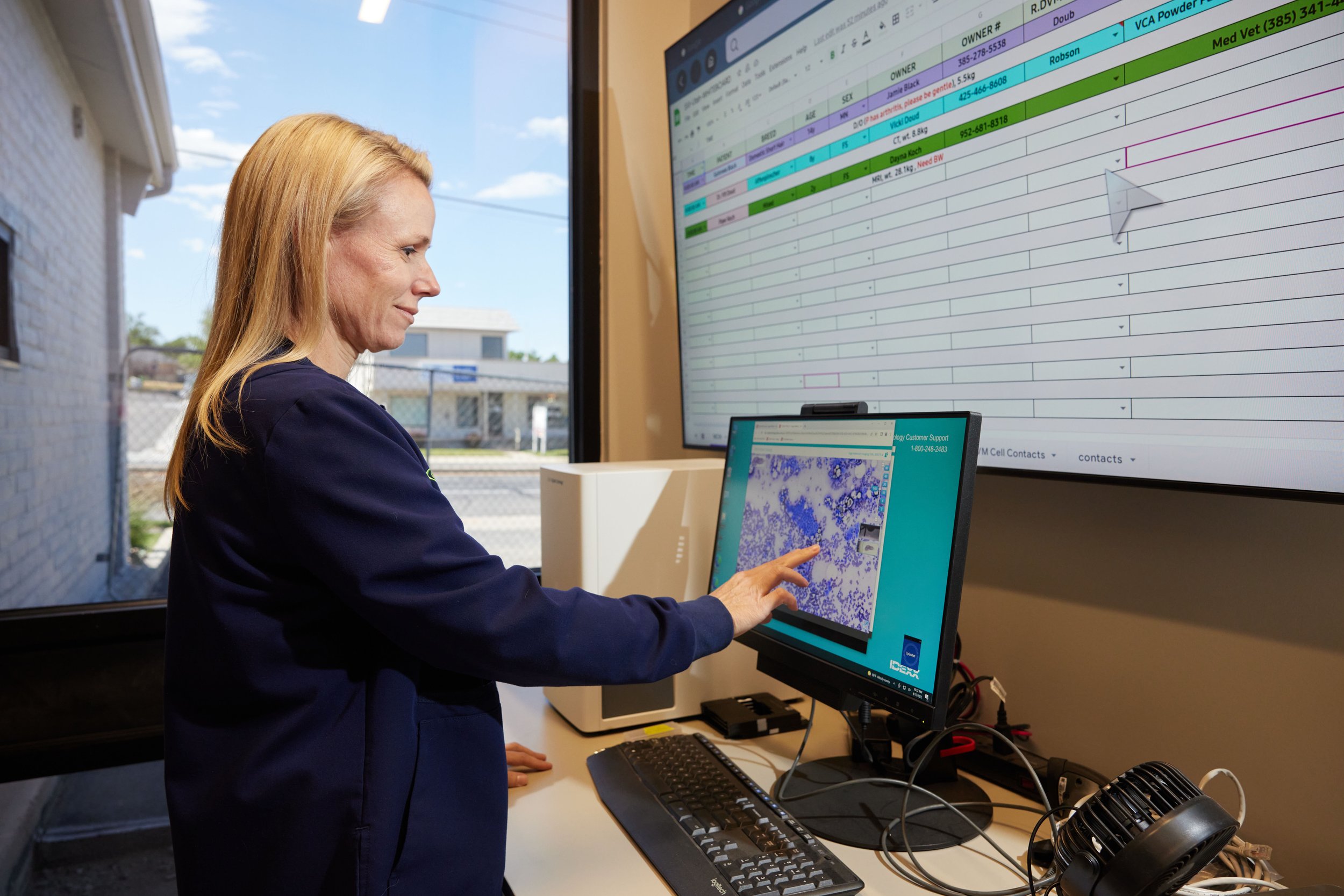What’s the Difference? DVM Radiologist vs. MD Radiologist
Veterinary surgeons and radiologists work together to diagnose and treat complex conditions in animals.
Veterinarians hear it all the time: “Are you a real doctor?”
Because vets treat animals, their expertise is sometimes viewed differently from human medicine. But in reality, veterinary medicine is just as complex, requiring years of rigorous education, training, and specialization.
In fact, many specialties exist in both fields like radiologists, surgeons, and oncologists, which can make it even harder to distinguish the roles of a DVM radiologist and an MD radiologist.
So what’s the difference? And why does it matter for your pet’s health?
In this article, we’ll cover:
What veterinary radiologists do
How their training compares to human radiologists
Why a board-certified DVM radiologist is essential for accurate pet diagnoses
How to apply to our ACVR-Accredited Residency Program
Are Veterinarians Considered MDs?
Veterinarians (aka DVMs) are not MDs. MD stands for Doctor of Medicine or Medical Doctor. DVM stands for Doctor of Veterinary Medicine.
While MDs and DVMs are both doctors, the simple difference is that one works with humans, and the other works with animals.
Education Requirements for DVM vs. MD
When it comes to education, veterinarians and medical doctors follow similar paths, but there’s a major difference in scope. While MDs focus on one species (humans), veterinarians must master medicine for multiple species.
Becoming a DVM
Undergraduate Degree: 4 years of pre-veterinary or science-related coursework
Veterinary School: 4 years of graduate-level education
Residency (for Specialization): 2 to 4 additional years, depending on the specialty
Board Certification (for DVM Radiologists): Additional specialized training in diagnostic imaging
Some DVMs go even further:
Radiation oncologists specialize in cancer treatment plans.
Board-certified DVM radiologists receive advanced training to interpret medical imaging and assist in diagnosing complex conditions.
Becoming an MD
Undergraduate Degree: 4 years of pre-med or science-related coursework
Medical School: 4 years of graduate-level education
Residency (for Specialization): 3 to 7 additional years, depending on the field
What DVMs & MDs Have in Common
Both DVMs and MDs undergo years of rigorous training in anatomy, physiology, medicine, and surgery to diagnose, treat, and care for their patients.
The key difference? MDs specialize in one species (humans), while veterinarians master medicine for different animals, from cats and dogs to horses, birds, and exotic animals—all within the same timeframe as an MD’s education.
Despite this broader scope, DVMs and MDs graduate with the same core abilities: diagnosing conditions, recommending treatments, and prescribing medications. But veterinarians bring a unique and essential skill set tailored to your pet’s health.
What is a Board-Certified Veterinary Radiologist?
Board-certified veterinary radiologists use advanced imaging like CT scans to diagnose pets with precision.
A board-certified DVM radiologist specializes in evaluating CT scans, MRIs, ultrasounds, and X-rays to help diagnose and treat your pet. These diagnostic images provide a deeper look at what’s happening inside your pet’s body, revealing the cause of unexplained symptoms, detecting injuries, and identifying underlying diseases that may require further treatment.
Veterinary radiologists play a critical role in both routine and emergency cases—like checking on a pregnant dog to ensure a healthy delivery, or figuring out what your curious kitten swallowed. These specialists use advanced diagnostic imaging to provide fast, accurate answers.
What Does a Veterinary Radiologist Do?
A radiologist at SVI reviews a Philips CT scan of a dog's head to assess internal structures and brain health.
Beyond interpreting diagnostic images, DVM radiologists take on several important responsibilities, including:
Overseeing diagnostic imaging equipment and ensuring accurate scans
Consulting with veterinarians to develop treatment plans
Supervising and training veterinary technicians
Educating radiology residents and interns in advanced imaging techniques
Writing detailed case reports to support diagnoses and treatment recommendations
Communicating findings to veterinarians and pet owners with clarity and care
Veterinary radiologists are medical experts and collaborators, educators, and problem-solvers who help make sure your pets receive the best possible care.
How Much Does a Veterinary Radiologist Make?
As of December 2023, there are over 800 board-certified veterinary radiologists and radiation oncologists in the United States, according to the American College of Veterinary Radiology (ACVR).
Regarding compensation, as of May 2024, the average annual salary for a veterinary radiologist in the United States is approximately $201,579, with most salaries ranging between $92,000 and $287,000. [2] The wide variation suggests opportunities for increased pay based on factors like skill level, location, and years of experience.
These numbers highlight the competitive nature of the veterinary radiology field and the specialized expertise these professionals bring to animal healthcare.
Find an ACVR-Accredited Residency Program
Dr. Rita Echandi performing an ultrasound on a cat at Sage Veterinary Imaging in Round Rock, Texas
At Sage Veterinary Imaging, we are proud to be part of the American College of Veterinary Radiology’s board-certified residency program. This hands-on experience is designed for veterinarians looking to deepen their expertise in diagnostic imaging and develop the skills needed to work with the most advanced technology available in veterinary radiology.
The program begins with a one-year diagnostic imaging internship, leading to a three-year radiology residency.
During this time, residents gain experience with:
Daily 3T MRI and 128-slice CT scanning
Ultrasound, nuclear medicine, and special procedures
Collaborative cases with an experienced team
With a strong emphasis on both clinical practice and academic learning, our residency provides an immersive training environment where residents refine their skills alongside experienced specialists. The program prepares residents to pass the ACVR board exam and gives them the confidence and expertise to succeed in the field.
>>> Learn more about our ACVR-Accredited Residency Program here. <<<
Expertise You Can Trust in Veterinary Radiology
Interpreting diagnostic images takes years of specialized training, and at Sage Veterinary Imaging (SVI), our board-certified radiologists are dedicated to providing accurate, detailed imaging reports you can trust. Their expertise helps veterinarians pinpoint diagnoses, guide treatment plans, and improve patient outcomes when advanced imaging is needed.
Dr. Jaime Sage reviews a digital radiograph for a veterinary patient at SVI in Sandy, Utah.
Founder Dr. Jaime Sage trained at Texas A&M University before completing a radiology residency and advanced MRI training under Patrick Gavin, Ph.D., DACVR/RO, a pioneer in veterinary MRI.
With over 20,000 MRI reports issued in the past 15 years, Dr. Sage is a recognized leader in the field. She currently serves as President of the CT & MRI Society at ACVR and frequently lectures at veterinary conferences worldwide.
SVI provides advanced diagnostic imaging services in Texas and Utah. Contact Us today to schedule an appointment.
Sources:





